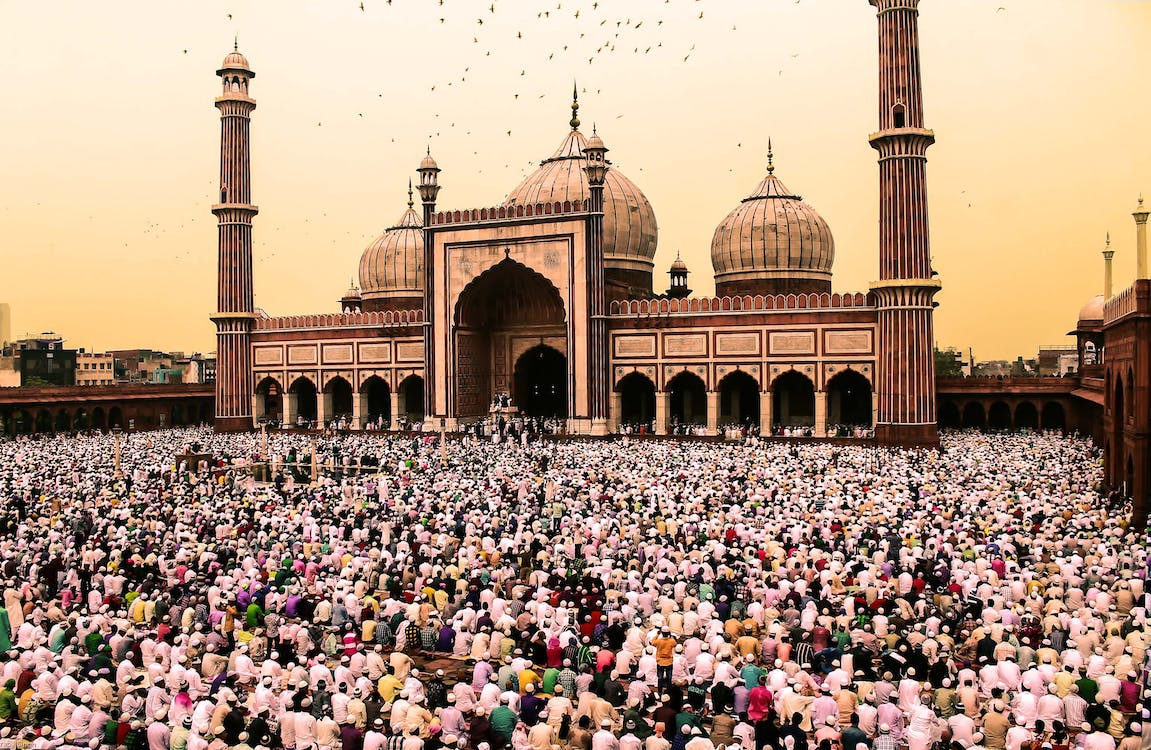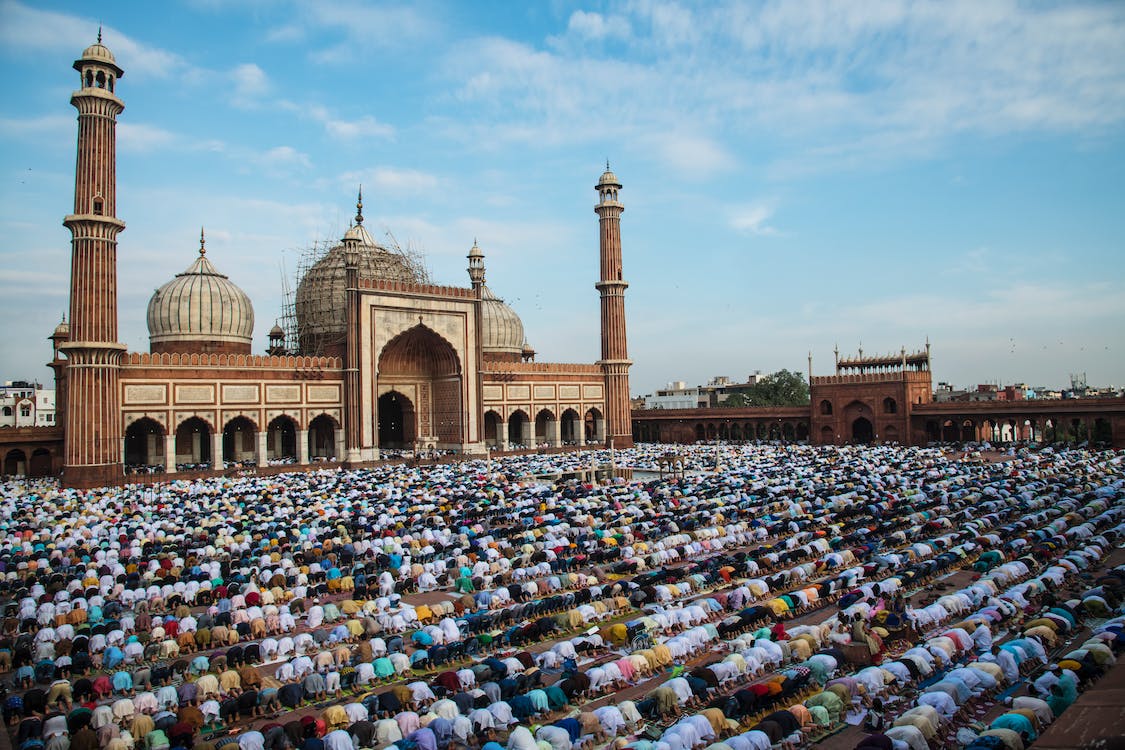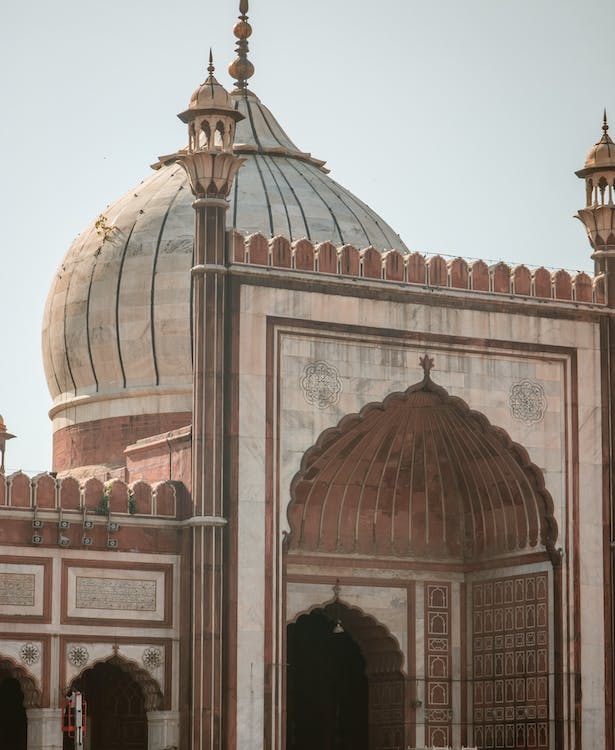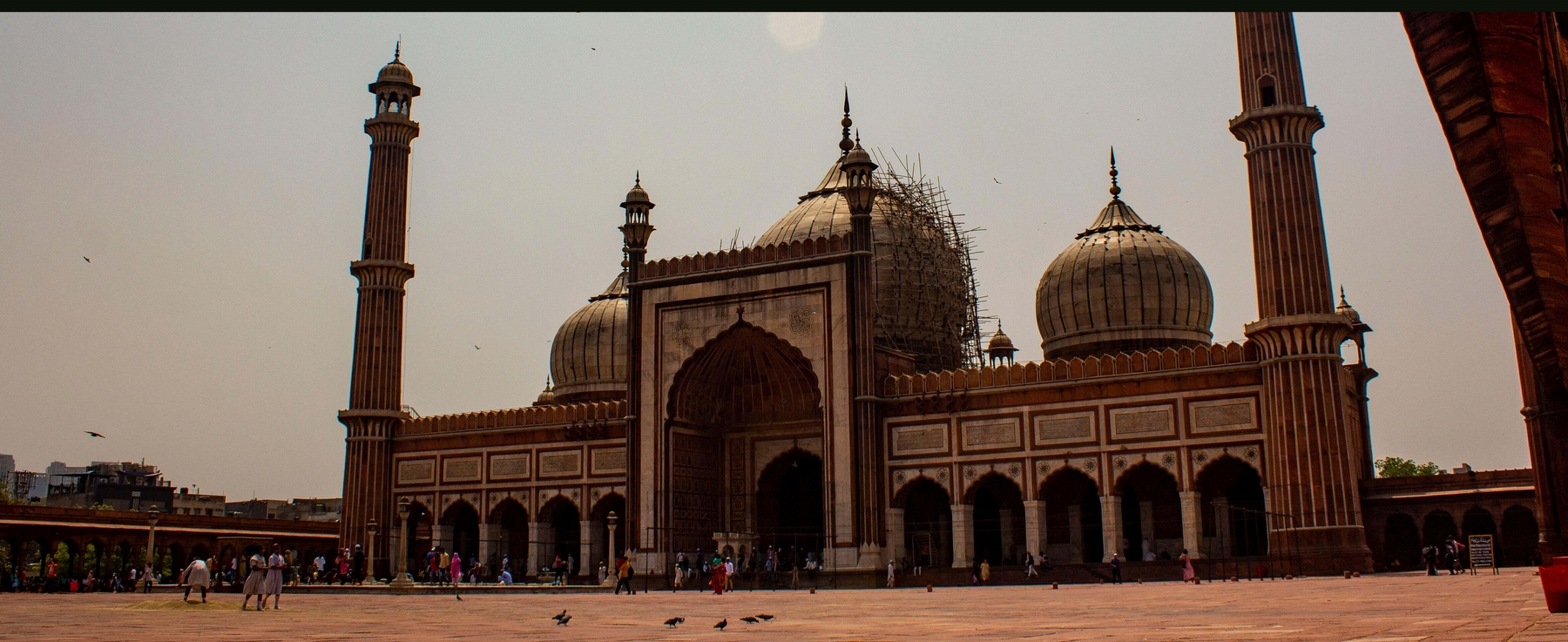




One of the largest mosques in India, Jama Masjid is situated in Old Delhi. Its construction was started in 1644 and completed by Mughal emperor Shah Jahan. Made of red sandstone and marble, this gorgeous mosque is also called Masjid-I-Jahanuma, meaning the mosque commanding the view of the world. The courtyard of the mosque has been built with red sandstone and can be accessed from the north, the south and the east, via flights of stairs that were once venues for house markets, food stalls and entertainers. The courtyard is so huge that it can easily accommodate 25,000 devotees at one time. Jama Masjid has been built on an elevation of 10 m and has three gates, two 40-m-high minarets and four towers. From the tower, one can get a splendid view of bustling streets of Old Delhi.
The mosque houses many relics of Prophet Mohammad and draws devotees from far and wide. Some of these relics include a Quran written on deerskin, sandals and a footprint of the Prophet embedded in a marble slab, and a red hair, which is said to have been from his beard.
Jama Masjid was designed by Ostad Khalil, a renowned Mughal architect. Legend has it that the eastern gate of the mosque was meant for the royal family in the olden days.
The best time to visit the mosque is during the festivities of Id-ul-Fitr and Id-ul-Zoha, when it is resplendent as a bride and is thronged by devotees from all over the country.
It is said that Lutyens incorporated the mosque into his design in such a way that the mosque along with Connaught Place and the Parliament House falls in direct line of sight. Tourists are not allowed in the mosque during prayers and while the entry is free, one will have to pay for carrying a camera into the premises.
Check out our recent tour glimpse



